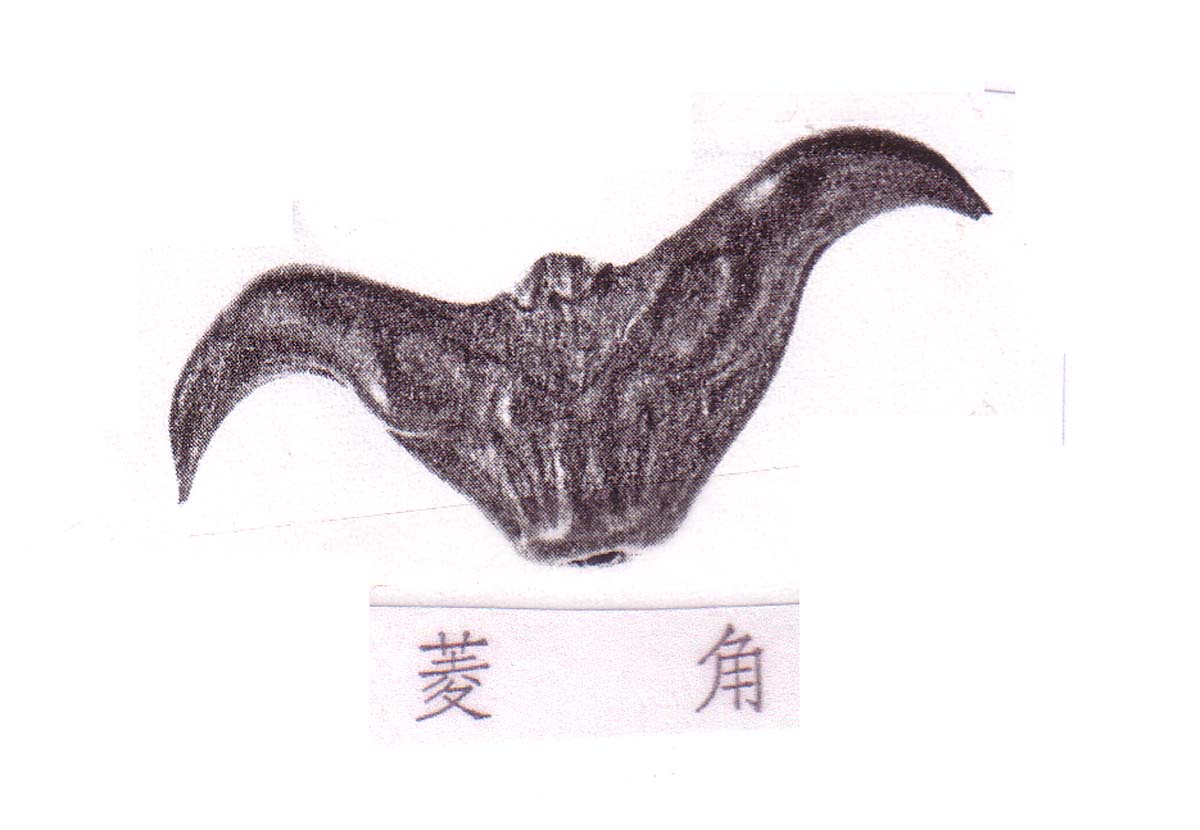
| What is Flavor and Fortune? |
| How do I subscribe? |
| How do I get past issues? |
| How do I advertise? |
| How do I contact the editor? |
Read 12935075 times
Connect me to:
| Home |
| Articles |
| Book reviews |
| Letters to the Editor |
| Newmans News and Notes |
| Recipes |
| Restaurant reviews |
| Article Index (all years, slow) |
| List of Article Years |
| Article Index (2025) |
| Article Index (last 2 years) |
| Things others say |
| Related Links |
| Log In... |
| Authors |
| Categories & Topics |
About: Nuts and Chestnuts
| by Jacqueline M. Newman |
Newman's News and Notes
Winter Volume: 2013 Issue: 20(4) page(s): 35
 LING NUTS are not water chestnuts; they are pictured on this page. Botanically, they are Trapis bicornis while water chestnuts are Eleocharis dulcis. Often confused and both called water chestnuts, that is not so. One other confusion, this bicornis is an aquatic plant once called Trapa bispinosa.
LING NUTS are not water chestnuts; they are pictured on this page. Botanically, they are Trapis bicornis while water chestnuts are Eleocharis dulcis. Often confused and both called water chestnuts, that is not so. One other confusion, this bicornis is an aquatic plant once called Trapa bispinosa.
The Chinese specoes are purple-brown, almost black on the outside, white within. Their thick hard exteriors have two curved horn-like ends usually on opposite ends. Some call them 'buffalo-head fruits' or 'sand-horns' or 'water caltrop.' Most say they are slightly sweet, powdery, and a bit astringent. Those who get their feet wet to collect them say they grow in ponds of stagnant muddy water.
These horn-shaped starch foods were illustrated in early agricultural documents circa 5,000 BCE. Now found in ancient Chinese burial sites such as Han Tomb #1 near Changsa, they are green when young, and darken with age. Referred to in poetry during the Tang Dynasty (618 - 907 CE, they were used as offerings to the gods.
Native to Central Africa, Central Europe, and Eastern Asia, there called Jesuit nuts, many countries claim their origin, some say theirs have four horns. No matter where originating, do not eat them raw because they often harbor single-cell bacteria that cause serious stomach problems or cysts invisible to the naked eye that hatch small worms. So do boil them for more than half an hour before eating any.
Rare is the recipe for this starchy food in a Chinese cookbook. Some say they taste close to artichokes. Literary sources report them made into candies, or served as a vegetable or starch boiled or baked. When dried and ground, their flour is found in bakery products or used as a thickener in cooked dishes.
The Chinese call them ling, ling jiao, or wu-ling, literature saying they can be used in meat, seafood, and vegetable dishes, prepared with eggs, or sugared and eaten as a snack.
They are seeded in watery beds in China, Japan, and Europe, and most recently in the Americas. Not always easy to find when fresh, they are also hard to find packaged or in cans. When fresh, they are tough to get out of their shells, so do use the sharpest of knives.
Chinese and other traditional medical practitioners say they are used to lower fevers, treat sunstroke, reduce diarrhea, retard excessive menstruation, reduce pain from cancer of the womb or esophagus, and reduce stomach ulcers. One friend told us the Cantonese are the largest users, they like them mashed and whole in the same dish. Here is our recipe to prepare them that way.
| You Tiao with Ling Nuts |
|---|
1/8 pound shrimp, peeled, their veins removed 1 Tablespoon chicken broth or water 16 ling nuts, boiled for half an hour, shells removed, alf of them mashed 1/8 teaspoon each, salt and sugar 1 Tablespoon cornstarch 1 deep-fried cruller, (you tiao, cut into eight peces 1/2 tablespoon vegetable oil 1 clove garlic, peeled and mashed 1 slice fresh ginger, slivered 2 pieces gai lan, each cut into two sections 1 carrot, peeled and cut into thin slices Preparation: 1. Mix minced shrimp with the broth, salt, sugar, and cornstarch and set aside. 2. Cut crullers down the length, not all the way through, then stuff with the reserved shrimp mixture. 3. Heat a wok or large fry-pan, add vegetable oil, and stir-fry garlic and ginger one minute, add half the ling nuts, gai lan, and carrot pieces and stir-fry for one minute, then cover the wok, raise the heat, and sir-fry another minute. Now serve when hot. |

Copyright © 1994-2025 by ISACC, all rights reserved
Address
3 Jefferson Ferry Drive
S. Setauket NY 11720